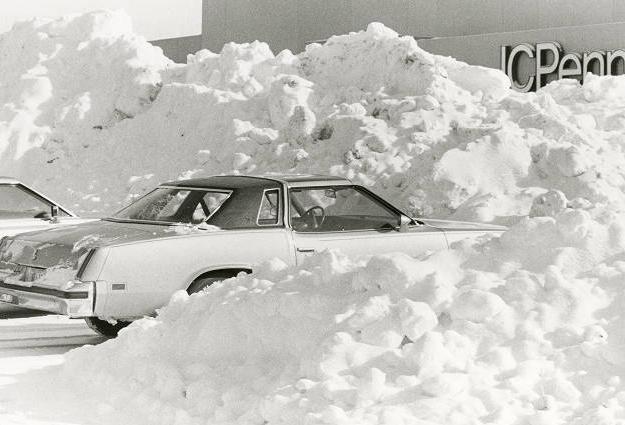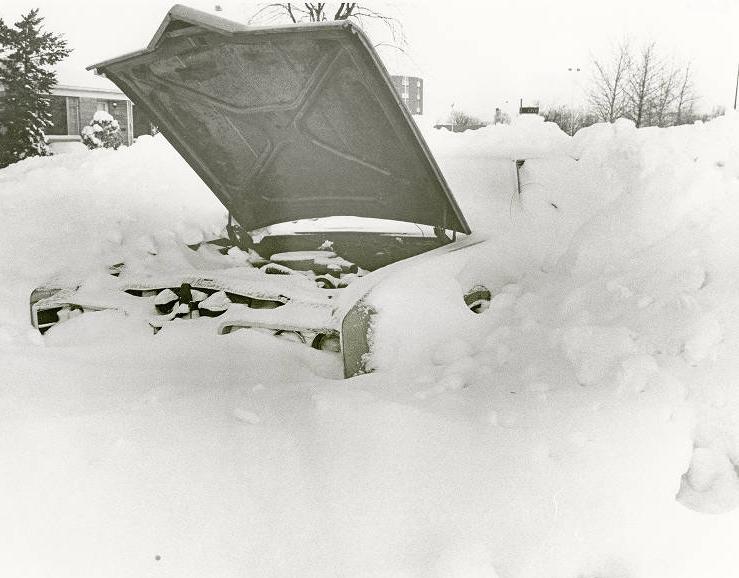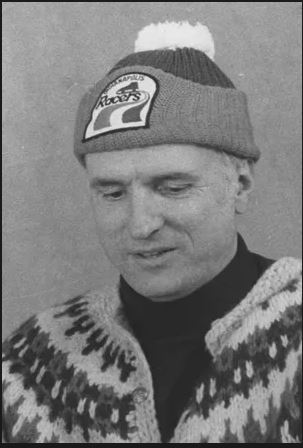The worst blizzard in Indianapolis history battered the city and most of Indiana on January 25-27. The “Great Blizzard of 1978” was part of a regional storm system that ravaged much of the Midwest and the eastern United States. Before it hit Indianapolis, 5 inches of snow from an earlier storm remained on the ground. At 3:45 P.M., Wednesday, January 25, National Weather Service forecasters in Indianapolis issued a blizzard warning for the entire state—the only time such a warning was declared statewide. Snow began falling in the Indianapolis area about 5 P.M. When the storm abated 34 hours later, the city had received 15.5 inches of new snow, bringing the total snow depth to more than 20 inches. The total January snowfall of 30.6 inches set a monthly record for Indianapolis.

Strong, gusty winds that prevailed for nearly two days created snowdrifts as deep as 10 feet. At the blizzard’s peak early Thursday, January 26, northwest winds reached 55 miles per hour, and the wind-chill temperature plummeted to -51°F. Although air temperatures near 0°F did not break any weather records, the combination of drifting snow, limited visibility, and bitter wind chills created severe conditions that eclipsed previous blizzards of January 29, 1977, and February 25, 1965.
The blizzard halted most forms of transportation. By early Thursday, travel on snow-clogged roadways was impossible. Airline, bus, and rail service ceased. was closed for a record three days from 11:45 P.M. Wednesday until 10 A.M. Saturday. Most businesses, industries, and nonessential services throughout the metropolitan area either closed or operated on a limited basis and with minimal staff.

The shutdown of land and air travel marooned thousands of people. Stranded travelers sought shelter at hotels, motels, Red Cross stations, National Guard armories, fire stations, public schools, hospitals, and homes of friends and relatives. Most state legislators, who had convened in Indianapolis for a session of the Indiana General Assembly, found lodging at downtown motels. Many of the city’s service personnel and other snowbound employees remained at their workplace, some for as long as three days.
On Thursday Indianapolis Mayor declared a snow emergency, mirroring the statewide emergency called by Governor Otis R. Bowen. The city’s snow emergency remained in effect for three days, the longest such emergency ever issued for Indianapolis. Hudnut’s declaration, coupled with his citywide curfew on Friday and Saturday nights, discouraged unnecessary travel, reduced the number of abandoned vehicles on roadways, and helped deter looting and vandalism.

Throughout the four-day ordeal, local officials, led by Mayor Hudnut, maintained essential services. Emergency personnel rescued stranded motorists and ferried the ill and injured to hospitals. Workers also delivered medical supplies to hospitals and homebound patients, provided food and fuel to the needy, and relayed information on the few local pharmacies and groceries that remained open.
Because standard emergency vehicles could not negotiate the snow-clogged roadways, an array of trucks, snowplows, bulldozers, snowmobiles, and helicopters were called into service. On one segment of Interstate 465, a National Guard armored personnel carrier was required to break through massive snowdrifts. Civilian volunteers owning four-wheel-drive vehicles played a pivotal role in many emergency missions and service runs. Businesses, automobile dealerships, and hundreds of Indianapolis residents loaned four-wheel-drive vehicles to the city’s emergency staff and helped transport workers to and from their posts. Snowmobile owners provided similar assistance, and networks of citizens-band-radio operators helped dispatch emergency personnel.

The state and city transportation departments faced a snow removal challenge of unprecedented scale. Although 60 snowplows and salt trucks were working on major thoroughfares in the metropolitan area, the city rented 29 heavy front and end loaders to break through snowdrifts and hired private contractors to supplement overwhelmed city crews. Although snow removal efforts were at first stymied by rapidly drifting snow, the city intensified its cleanup efforts early Saturday as high winds diminished. By Sunday, January 29, main roads in the metropolitan area were once again passable.
In the blizzard’s aftermath, Indianapolis experienced a surge in civic pride as residents reflected upon stories of personal sacrifice and acts of goodwill. Hudnut’s hands-on approach and frequent media presence throughout the blizzard bolstered confidence in his leadership. He later characterized the blizzard as a defining moment in his administration. Tow truck drivers, heavy equipment operators, merchants of snow removal equipment, and four-wheel-drive dealerships enjoyed windfall profits.
After the blizzard, Indianapolis reexamined its preparedness for future snowstorms. A boost in the transportation department’s previously meager budget led to the purchase of heavier, more reliable equipment for snow removal. The city identified snow priority routes and eventually developed a comprehensive master plan for snow and ice removal. The police department improved its access to emergency vehicles, and the sheriff’s department eventually purchased several four-wheel-drive vehicles to transport dispatchers and officers to their posts during heavy snows. Similarly, the city’s major television stations began to purchase four-wheel-drive vehicles, which 10 years later would become commonplace in the Indianapolis area.

Help improve this entry
Contribute information, offer corrections, suggest images.
You can also recommend new entries related to this topic.

